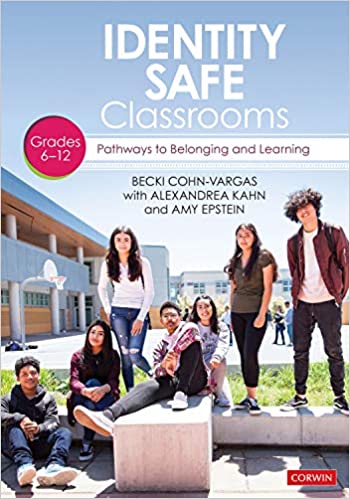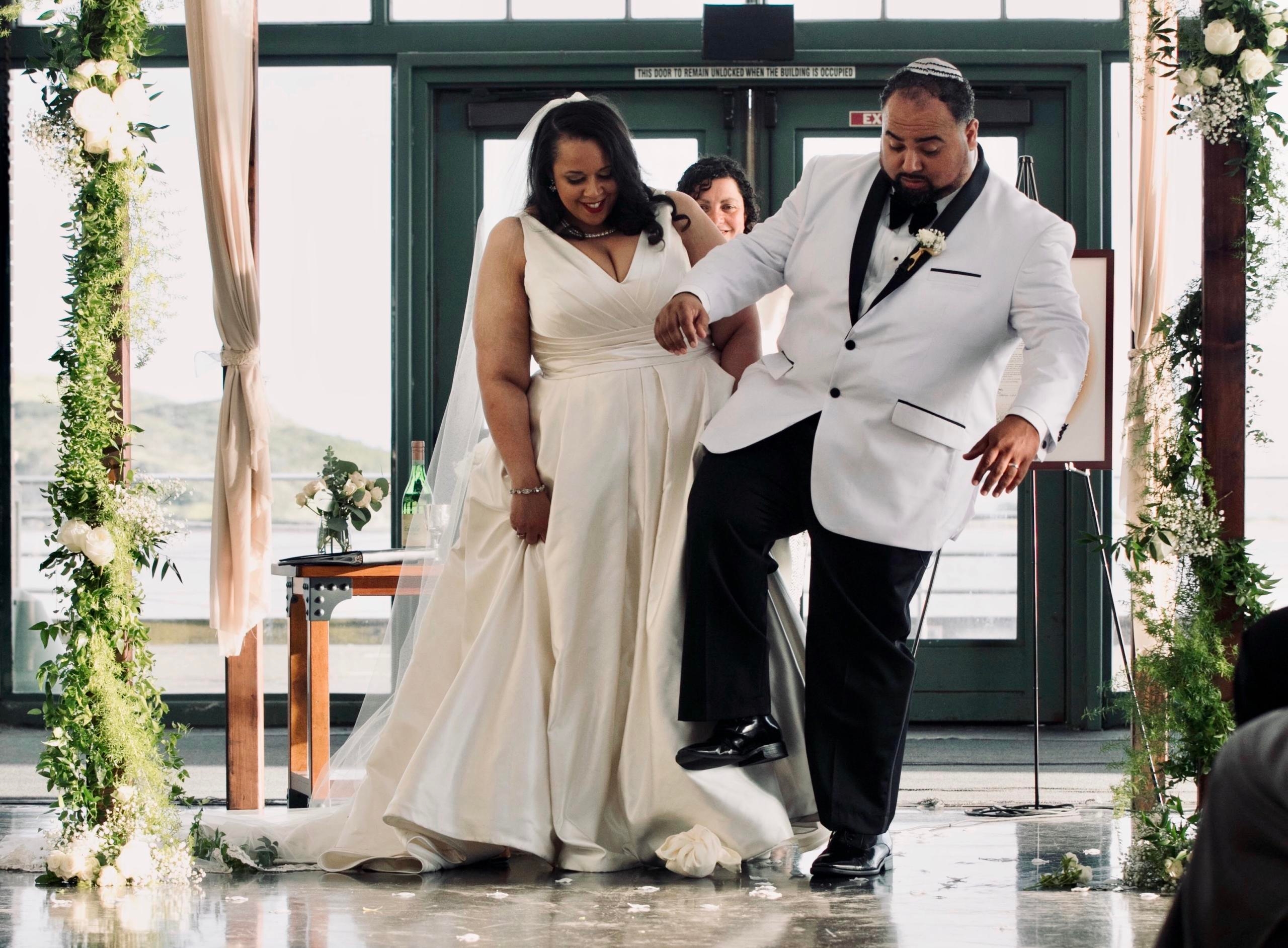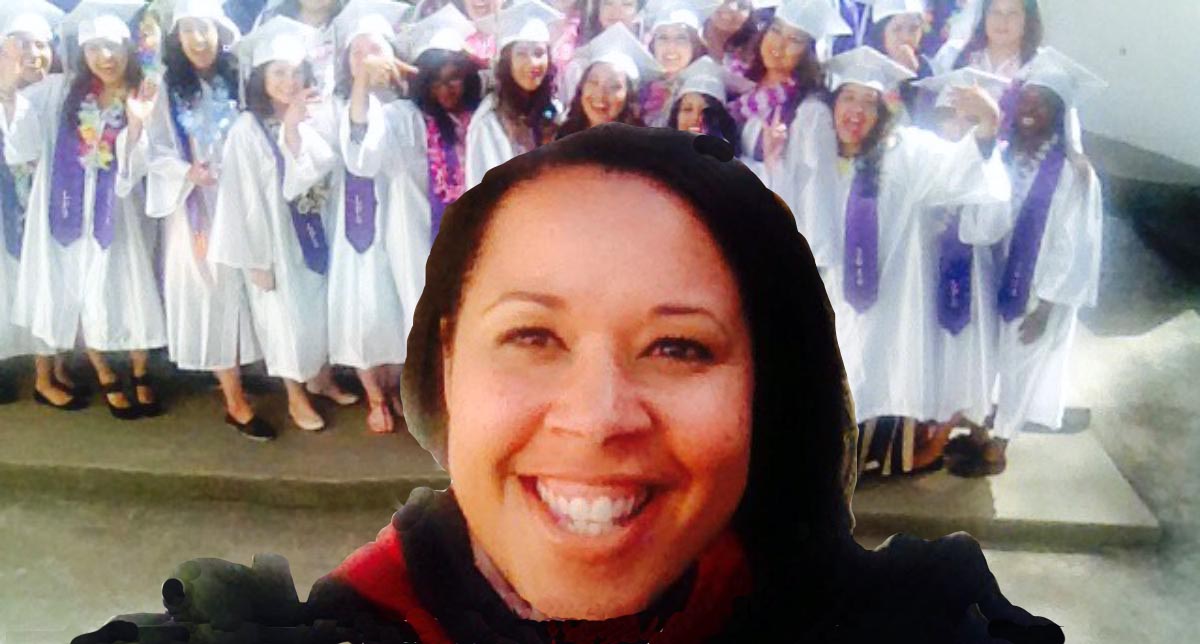When she was in high school, Alexandrea Kahn already knew she wanted to be an educator.
Kahn was placed in an “accelerated” track while her close friend was stuck in remedial classes, inhibiting her ability to earn credit in courses that would enable her to attend a four-year college. Seeing how the school failed to support her friend fueled Kahn’s passion to change a system that limits opportunities for students who need it the most, especially Black and Latino students. “That experience in high school opened my eyes to the inequalities that existed in education,” she said. “I saw many students who looked like me not having the same opportunities and wanting to change that.”
A native of El Cerrito, Calif., Kahn is the first person in her immediate family to graduate from college. (She earned a BA in English from U.C. Berkeley.) After serving in different roles at Leadership Public Schools—a network of public high schools in Hayward, Oakland, and Richmond, California—over the last eleven years, she will assume a new position as Senior Director of Academic Programs at Alder Graduate School of Education later this summer. And next month, Identity Safe Classrooms: Pathways to Belonging and Learning, a book that Kahn co-authored on ways that middle and high school teachers can create more inclusive classroom environments, will be published by Corwin.
We recently spoke with Kahn about the book, her experiences as a Black Jew, and her hopes for her young sons. Below are edited excerpts from the conversation.
What is an identity safe classroom? How is it created and supported?

An identity safe classroom is one where the various facets of a student’s identity—their race, religion, gender identity, and learner identity, to name a few—are viewed as an asset rather than a barrier for success. It’s an environment that validates student experiences and the various backgrounds and identifies that they hold in order to create an environment of belonging and inclusion, which is essential for learning. One of the metaphors we use in the book is the idea of identity theft. When a person experiences identity theft, they cannot operate in the world or function as themselves. The same is true on the psychic level: If a person’s identity has been stolen by becoming invisible or negatively stereotyped, they are unable to function or reach their potential.
How did you become involved in this work?
As a teacher and principal for seven years at a charter school in East Oakland, one of the issues that I thought a lot about was how to create inclusive classrooms where students feel seen, which is so important because belonging is a precondition for learning. I noticed some teachers had more success doing this than others. As my role changed in our organization after my principalship, I was on this journey of trying to figure out how to best support and guide teachers, and I happened upon a blog post on Teaching Tolerance written by Becki Cohn-Vargas, who is the aunt of one of my childhood friends. He introduced us via email, and we ended up launching a pilot project at Leadership Public Schools with nine teachers in our network who were interested in integrating this approach in their daily instructional practices.
What are some of the best practices you’ve identified in your book for teachers to create more welcoming learning environments?
The first is mindset and stance. For identity safe classrooms we maintain that a color-blind stance is a barrier to having an inclusive and antiracist classroom because you’re not seeing the beautiful diversity the students bring, or the academic or socio-emotional needs that may exist for them. Simple acts like greeting students at the door can be enacted in ways that are identity safe and ways that are not. Being intentional about learning how to properly pronounce students’ names, use appropriate pronouns, and being aware of biased statements or comments (e.g. gendered norms around learning math and science, focusing on negative behaviors and not learning) create environments where students feel valued for who they are. While for many this seems like an easy thing to do, I am constantly humbled by the ways we can unintentionally cause a student to feel disconnected from their teachers and/or school. It is essential to know your students and use that knowledge to create a space of validation, support, and belonging.
As a Black Jew, what have your experiences in the Jewish community been like? How can the Jewish community become more welcoming to Jews of color?
My great-great grandmother, Elsa Totsik, was Jewish, but I wasn’t raised in the faith. One of the most beautiful things is that my introduction to Judaism came through my husband, Kenny, and Be’chol Lashon. I remember going to Camp Be’chol Lashon to teach and thinking, this is such a special space where children from different ethnicities, racial backgrounds, and family structures can come together and celebrate Judaism. In many ways, this camp embodies the concept of identity safety as a result.

There have been instances outside of the safe space of Be’chol Lashon where it has felt very unwelcoming. I’ve seen the racism that my husband Kenny encounters regularly when we’ve been in Jewish spaces where they’re asking him questions and essentially testing his Judaism. We need to explore ways to actually build coalitions within the Jewish community with people of color and beyond the lines of religion. In the same way that people are asking themselves right now how they can be anti-racist, white Jews should be asking themselves those same questions in the service of creating environments that are inclusive for non-white Jews.
You have two young, Black Jewish sons. What are your hopes for them, and for the society that they will be living in?
I hope that they will experience a world where we truly value our differences and where people can exist in the intersection of their identities. A place where it won’t be an anomaly for my sons Theo and Harris to say, “I’m Black and Jewish.” A place of true inclusion where we are all committed to unlearning internalized white supremacy.



